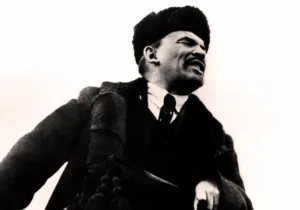The Atlantic world may be accurately described as witnessing a new ascent of protest, indeed insurrectionary politics. In the United Kingdom, primary fountainhead of international and comparative law, the British people last June dramatically reversed more than four decades of European Union participation; whilst in the United States, the Tea Party, Donald Trump, and others have derived much of their popularity simply from maligning traditional political structures. Much of this dissenting politics appears aimed at the supremacy of capitalist globalism, and at least for a Marxian theorist, such behavior is to be eventually expected and welcomed. Revolutionaries, by definition, always welcome particular kinds of dissent.
Janet Polasky, Presidential Professor of History at the University of New Hampshire, seeks to once more recapture the cosmopolitan, borderless, and dynamic character of revolutionary politics in Revolutions without Borders: The Call to Liberty in the Atlantic World (2015). “Without an understanding of the rich variety of revolutionary possibility in the past, we are condemned to judge the present through the blinders of a limited set of national narratives,” she opens. “Revolutions without Borders reminds us that…many roads have led in different directions, not straight to the present” (12).
Although no interval is specified, Polasky’s narrative concentrates on the last quarter of the eighteenth century, and her work intends to capture the spontaneous profusion of revolutionary thought across America, Britain, and France, and from the capitols of those nations out to the peripheries in the Caribbean and Africa. The main idea is to demonstrate that the American and French Revolutions were not separate episodes belonging to distinct national histories, and secondarily that several other failed attempts at revolutionary transformation also occurred, both on the European Continent and further afield.
Chapters concern different genres of communication rather than historical instances. Chapter one comprehends revolutionary pamphlets, with sustained discussions of Thomas Paine, Jacques-Pierre Brissot, and Joan Derk van der Capellen, representing respectively the American, Genevan, and Dutch revolutionary transformations; while the second chapter, concerned with revolutionary journal writing, concentrates on Elkanah Watson and Helen Maria Williams, who both spent time in Paris as revolution began.
More interesting is Polasky’s coverage (ch. 3) of the almost forgotten Black Loyalist movement. Olaudah Equiano (c. 1745-97) published his Interesting Narrative (1789), the first slave narrative to achieve international recognition, just as Parliament was renewing debate on the trans-Atlantic slave trade. Its harrowing description of the Middle Passage roused the public into opposition, and Equiano’s account of his Christian conversion and solace remains highly influential. After the American Revolution, Black Loyalists settled in Nova Scotia and then, with the tepid support of Whitehall, in Sierra Leone, where they appropriately named their capitol Freetown.
Following Benedict Anderson, Polasky rightly contends in her fourth chapter that trans-Atlantic revolutionary agitation generated great intellectual mobilization and curiosity to read the latest news, while the fifth culminates in the French Convention’s abolition of slavery throughout the Francophone world on 4 February 1794. “The Revolutionary Household in Fiction” (ch. 6), meanwhile, concentrates on Wollstonecraft’s reading of Rousseau, while “Virtuous spouse, Charming friend!” (ch. 7) paints an intimate portrait of four cosmopolitan revolutionary couples, with French diplomat Louis Otto appearing twice.
Chapters eight and nine mostly concern the extent to which the Napoleonic deviation brought the initial promise of the revolutionary era to a gratuitously violent and highly demoralizing end. The illustrious careers of revolutionary leaders such as Thomas Paine, Thaddeus Kościuszko, or Toussaint Louverture, Polasky demonstrates, often came to grief at their final ends, suggestive of the long period of conservative reaction to soon set in from Paris to Washington.
According to her Acknowledgements, Polasky began framing this book project as long ago as 1972 while still an undergraduate at Carleton College (357). A lifelong student of Carl Weiner, she has also authored Revolution in Brussels (1985), The Democratic Socialism of Emile Vandervelde (1995), and Reforming Urban Labor (2010), all of which ultimately render homage to the materialist conception of history. Among the chief merits of the present volume, however, is its deep archival research, in which Polasky brings to light forgotten letters and other primary source documents. Characters such as Mary Wollstonecraft, Nancy Shippen Livingston, Ruth and Joel Barlow, and the Duchesse de la Rochefoucauld vibrantly take life on the page, and the reader derives a potent sense of historical atmosphere.
Such humanist scholarship—whatever the social scientists might say—may be thoroughly enjoyed on its own terms; but what appears to be lacking throughout is much sense of authorial intent. Revolutions without Borders is not obviously responding to any existing scholarly opinion, nor does it articulate an overall thesis. Polasky writes at the very end of the work, “I have wondered why historians would divide a transnational revolutionary movement into self-contained national stories…[for] the revolutionaries I encountered in the archives ignored borders” (353-54). Monarchists of the period such as Dr. Johnson or the Duke of Wellington also ventured out of the house at times, it would seem; but that aside Polasky never identifies the “historians” who hold to this traditional Westphalian view, nor does she consider any scholarly implications of her revisionist perspective. Yet if her main historical implication is that revolutionary agitation fails to respect national borders, then that might indeed explain why a prominent politician might promise to build a wall.
—
Dr. Mark R. Royce is Assistant Professor of Political Science at NVCC-Annandale and author of the forthcoming The Political Theology of European Integration: Comparing the Influence of Religious Histories on European Policies. He has written for The European Legacy, International &Comparative Law Quarterly, and the Journal of Church & State, and is active in the Anglican Communion in Virginia.
Photo Credit: Battle at San Domingo by January Suchodolski, 1845. This painting depicts Polish soldiers in French service fighting against Haitian rebels. Polish Army Museum. Via Wikimedia Commons.






 Sponsor a student for Christianity & National Security 2024
Sponsor a student for Christianity & National Security 2024